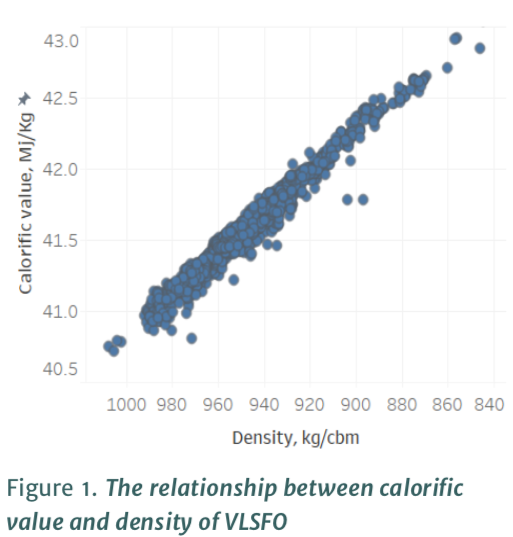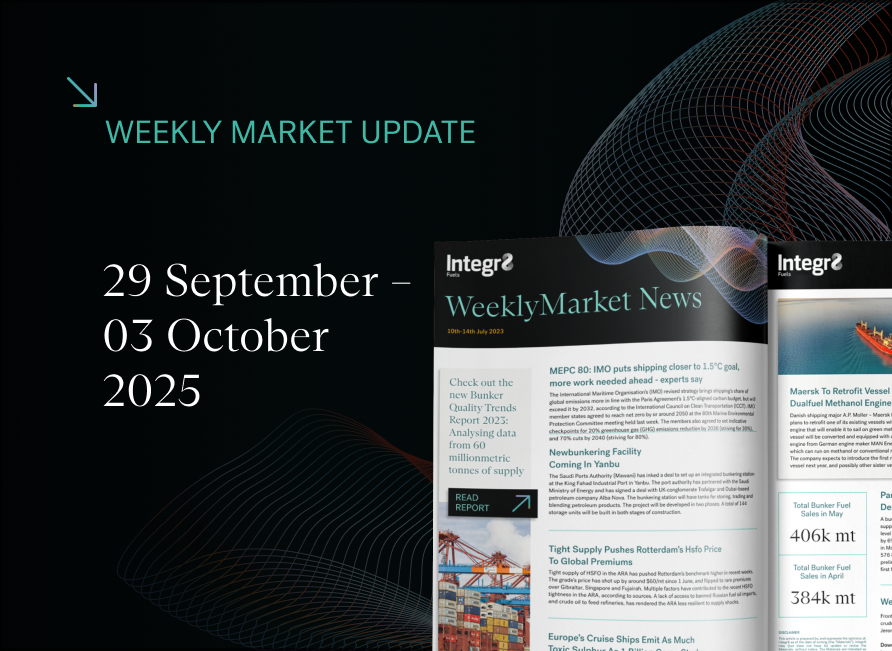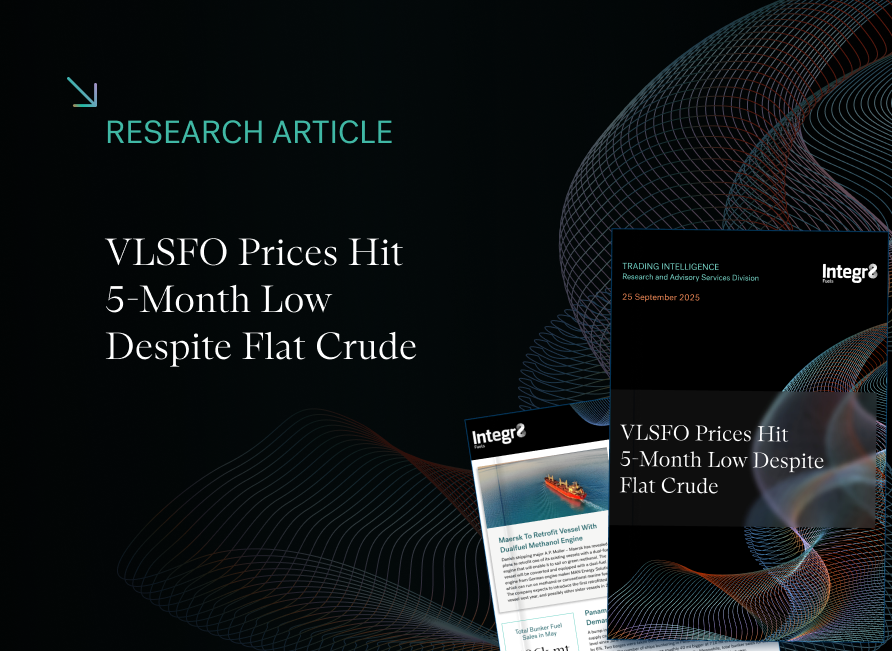Buying fuel on calorific value as means to achieve savings
For many years buying bunker fuel has mostly been about getting the best quoted price and avoiding quality issues. This is as topical today, particularly going into 2020.
Buying the best quoted price, however, does not necessarily mean buying the cheapest fuel. One fuel property that often gets overlooked is net calorific value (will simply refer to as calorific value going forward), which shows how much energy is produced by combusting the fuel.
According to Integr8 Fuels’ survey of customers, the majority of bunker fuel today is bought basis the quoted price. Only a handful of customers (12%) take calorific value into consideration, however over 30% indicated they are willing to buy on the calorific content basis provided such an adjustment is available at the time of buying. The ability to buy on-spec fuel and maximise calorific value can result in substantial savings.
With real-time quality data and the calorific value price adjustment always to hand, Integr8 Fuels provides the ability to secure truly the cheapest price without compromising on quality.
Which fuel parameters affect calorific value?
Calorific value, despite its importance, is a secondary calculated parameter and is not part of the ISO8217 spec. However, in order to calculate it four parameters are used, namely density, ash, sulphur and water, all of which are part of the ISO8217 spec. Having analysed over 5,000 samples, it was found that density has the biggest bearing on calorific value (Figure 1), whereby calorific value increases with a decrease in density.

Calorific value comparison by fuel type
Looking at over 300,000 samples of different types of bunker fuel, it can be seen that HSFO on average has the lowest calorific content, while LSMGO the highest. The new fuel type, VLSFO, tends to straddle the two, see Figure 2.

On average VLSFO has 3% less energy than LSMGO and 3% more energy than HSFO. Higher calorific value VLSFOs (>42 Mj/kg, also often more paraffinic with lower density and viscosity) tend to produce about the same energy as an average LSMGO, and lower calorific value VLSFOs (<41.5 Mj/kg, with higher density and viscosity and cracked material blended in) will have the same energy as an average HSFO.
Calorific value price adjustment
Calorific value also varies greatly within each fuel type, for example some VLSFOs can contain 3-5% more energy than others, depending on density, ash, sulphur and water content.
In order to compare fuels on calorific value, an adjustment factor is needed for which the average global calorific value by fuel type is taken as a base. Individual calorific values (calculated through either historical data, the most recent certificate of quality (COQ), or the current COQ) are then compared with the base and the adjustment factor is produced, which is then applied to the quoted price.
The economic impact of calorific value varies by fuel type, depending on the outright price. Figure 3 summarises the monetary difference in calorific value adjusted prices for HSFO.

As can be seen, assuming both 1st and 4th quartile suppliers offer the same price for their product, the price difference can be relatively high, adjusted for the difference in calorific value.
Given that VLSFO is priced much higher than HSFO, Figure 4 summarises the price difference between two VLSFO when accounted for calorific value.

As expected, given the much higher pricing seen for VLSFO, the calorific value adjusted price difference almost doubles to $15/mt compared with HSFO.
This highlights the growing importance of taking calorific value into account when buying bunker fuel as a means to achieve substantial savings. Having looked at the theoretical examples, actual stems can now be analysed.
Putting calorific content buying into practice
Calculations above show that buying bunker fuel on calorific value can result in substantial savings; this concept was then tested on actual stems.
The supplier enquiries were sent in the usual manner, with COQs requested from each supplier in order to calculate the calorific value. With the introduction of VLSFO, requesting COQs has rather become the norm, so in general there should be no issue in getting the current COQ from the supplier together with the quote. On relatively rare occasions when the current COQ cannot be obtained, the most recent COQ or historical averages can be used to estimate calorific value — these of course may not be as accurate. It is also possible that for stems with longer lead times current COQs may not be representative, however from what was observed this does not happen often.
Figure 5 contains the summary of supplier quotes and calorific value adjusted prices for a VLSFO stem fixed in Singapore in late October basis calorific value.

On this occasion all COQs indicated good quality fuel well within the spec limits. The first two suppliers’ calorific value was below the global average resulting in the negative price adjustment, which brought the price higher.
Supplier 1, despite quoting the lowest price, turned out to be the most expensive given its relatively low calorific value, whereas Supplier 2, despite quoting the second best price, was in fact the cheapest. Supplier 2 was eventually chosen for this stem with the lifting quantity of 1,250mt.
Buying this quantity from Supplier 2 basis the quoted price would have resulted in the perceived overpayment of $2,500 ($2/mt * 1,250mt) compared with Supplier 1, in fact taking calorific content into account choosing Supplier 2 resulted in $6,250 ($5/mt * 1,250mt) of savings — this can cover Capesize operating costs for a day.
Conclusion
It has been shown that buying bunker fuel on calorific value, rather than the quoted price alone can result is substantial savings. The main reason this method has not seen a wide adoption yet is due to the fact that most bunker buying systems do not have the calorific value adjustment readily available.
Integr8 Fuels has invested in data and systems through which it is possible to procure bunker fuel both on quoted and calorific value adjusted prices, opening the potential for bunker fuel savings.
Paul Marsh
Research Director
P: +44 207 9435 417
E: Paul.M@integr8fuels.com
Anton Shamray
Research Analyst
P: +44 207 4675 856
E: Anton.S@integr8fuels.com

Contact our Experts
With 50+ traders in 12 offices around the world, our team is available 24/7 to support you in your energy procurement needs.




